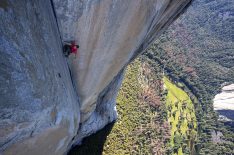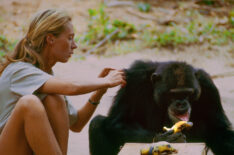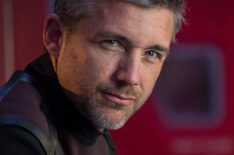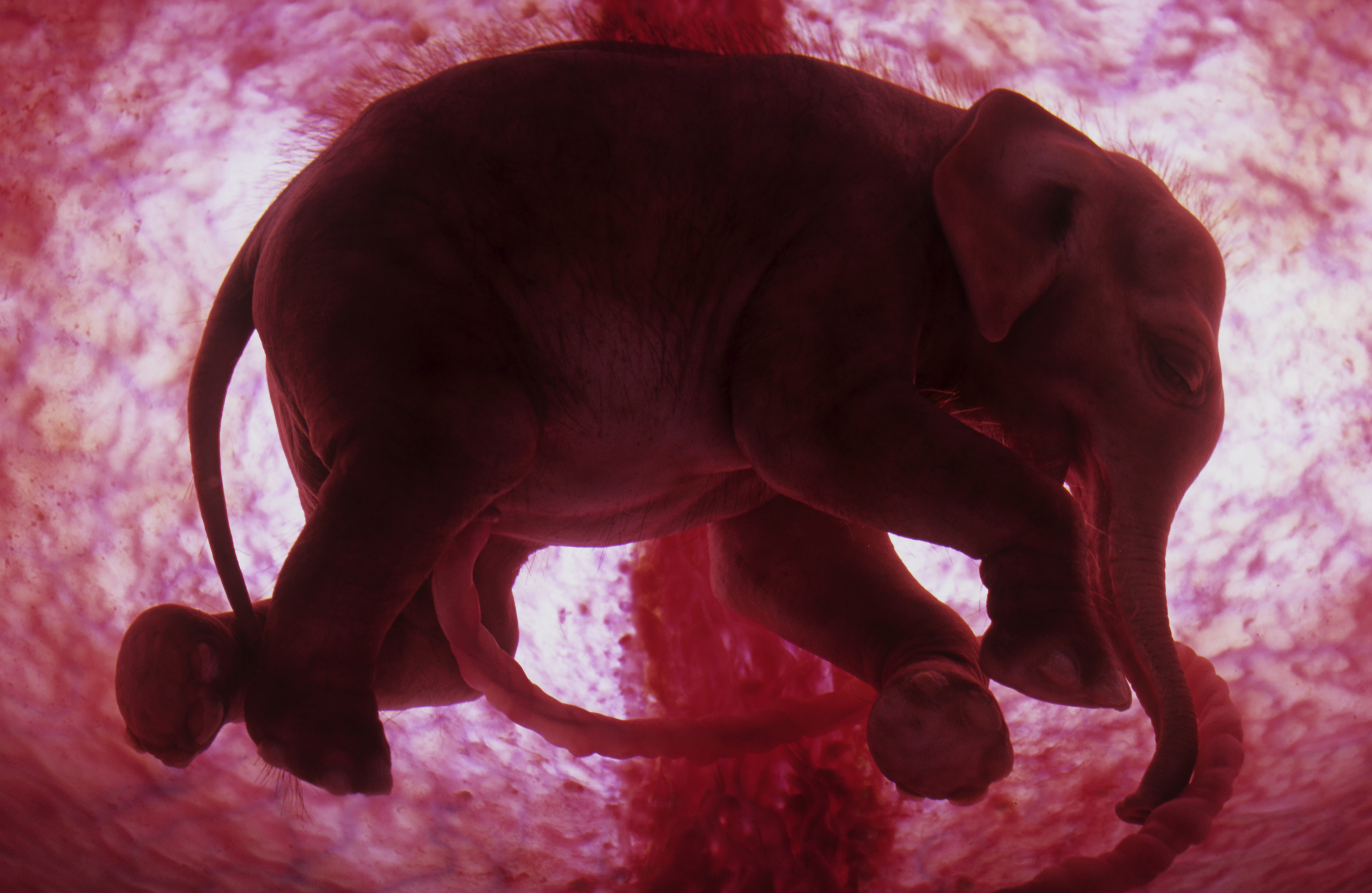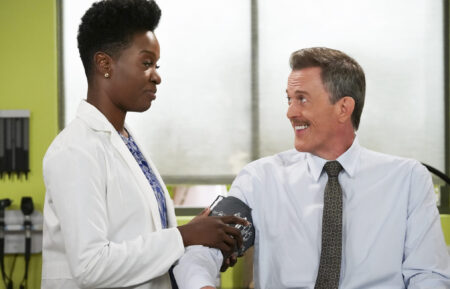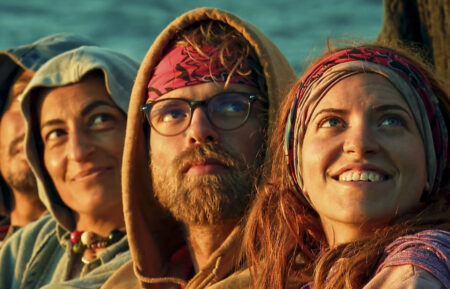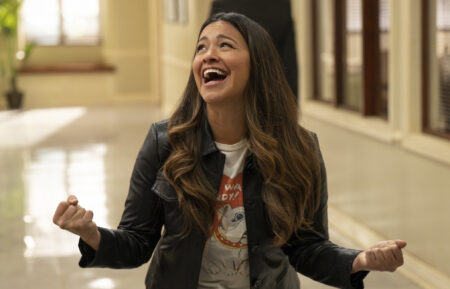Behind the Scenes of ‘Yellowstone Live’ Season 2: Baby Bears, Old Faithful & a 100-Year-Old Barn
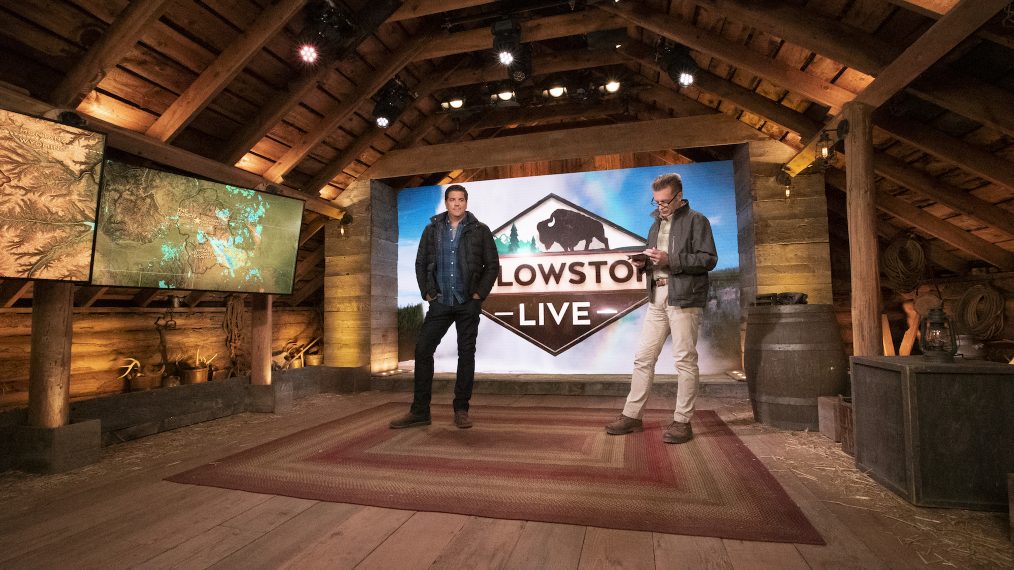
Preview
Yellowstone National Park covers 3,500 square miles across three states, which means that there was plenty of ground to cover — literally — when National Geographic decided to broadcast live from the park back in August 2018. For Season 2 of Yellowstone Live, which premiered live on Sunday, June 23, the filmmakers are focusing more on the animal inhabitants of the land.
The opening moments of the new season featured rare footage of a wolf pack shot that morning, a live shot from inside a beaver lodge, a mama bear and her two baby cubs, and a small group of baby marmots. Host Josh Elliott returned to helm the broadcast alongside naturalist and animal expert Chris Packham, with co-host Jenna Wolfe reporting live from the American Prairie Reserve in Northeastern Montana.
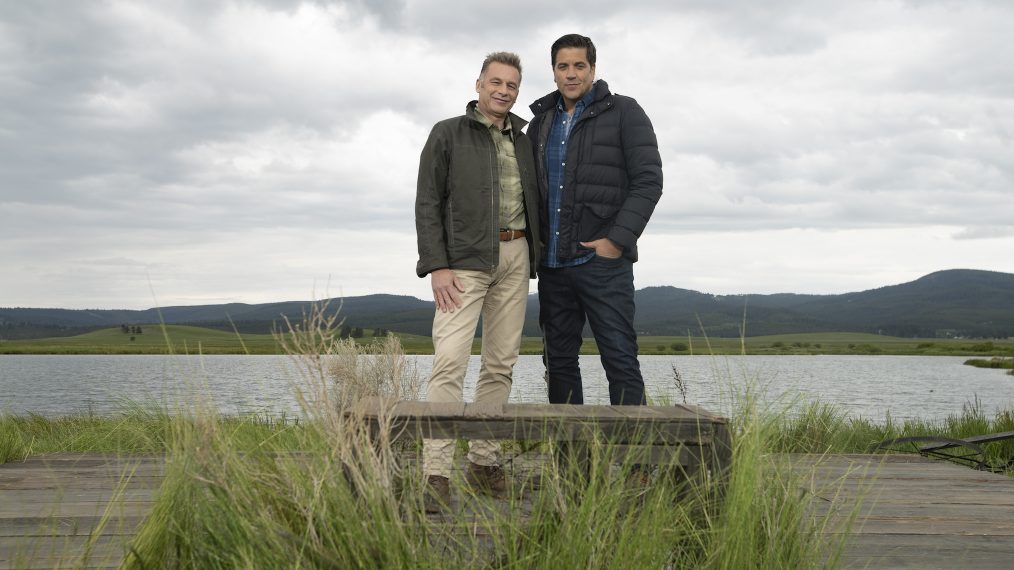
Hosts Josh Elliott and Chris Packham outside the barn studio in rehearsals for Yellowstone LIVE. (National Geographic/Dominic Davies)
TV Insider was behind the scenes in West Yellowstone, Montana Sunday night for the first broadcast of Yellowstone Live‘s second season. The first thing to know about the production: base camp was headquartered in a field next to Bar N Ranch, a small gathering of tents, trailers, trucks, and containers — plus a giant satellite to transmit the actual show. Second: The only actual building was the 100-year-old barn tricked out with monitors showing live seismic activity and live weather patterns in the area. Just outside the barn was a fire pit, which was next to the pond that served as a backdrop for the majority of Elliott and Packham’s commentary. And third: the production work took place in two different trailers. One was filled with editing bays, and one held a mobile control room most recently used for the Tony Awards.
We spoke to Elliott, Packham, and the show’s executive producers about what to expect from the four-night special event, which continues Monday through Wednesday at 9 p.m. on National Geographic Channel. Here’s what they said:
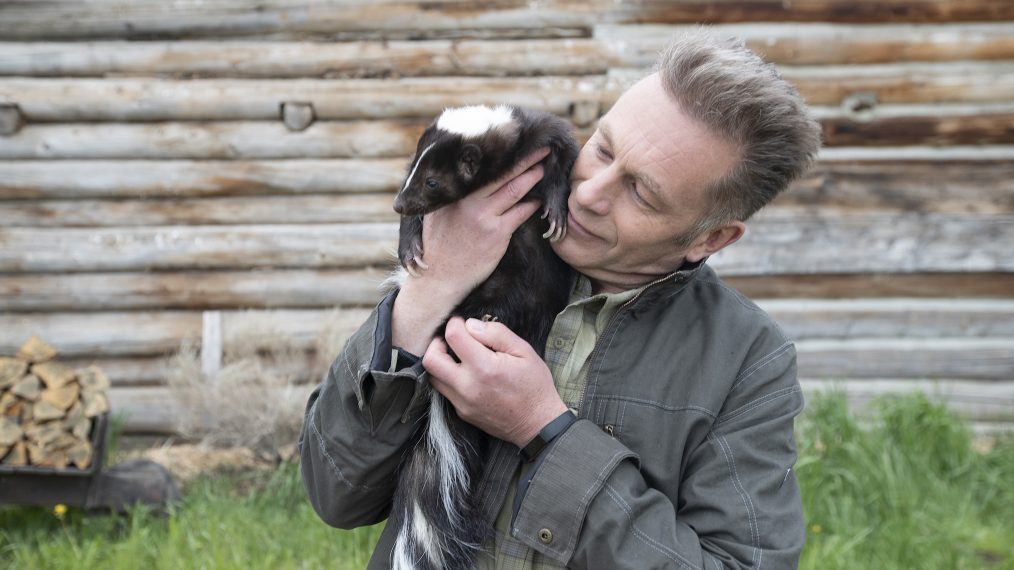
Host Chris Packham with guest Lollipop the Skunk. (National Geographic/Dominic Davies)
More Baby Animals
While Season 1 took some time to explore the human impact on the park, showrunner James Smith said the biggest lesson he and the team learned was that the people would rather be watching animals.
“That’s what the audience wants, so we doubled down on that. We’ve got lots more wildlife camera operators out there,” he said.
The season premiere was called “Baby Boom,” and delivered on the title’s promise with the aforementioned shots of baby bears, beavers, marmots, and more. Executive producer Al Berman said the broadcast moved from August to June specifically to accommodate that content, because it’s the time when the wildlife is raising newborns.
“We’ve got babies everywhere. We’ve got baby bison. We have baby otters, we have baby longhorn, we have baby big horn,” Berman said. “We have baby grizzlies, we have baby black bears all over the place, baby chicks, goslings. We have baby eagles. It’s amazing.”
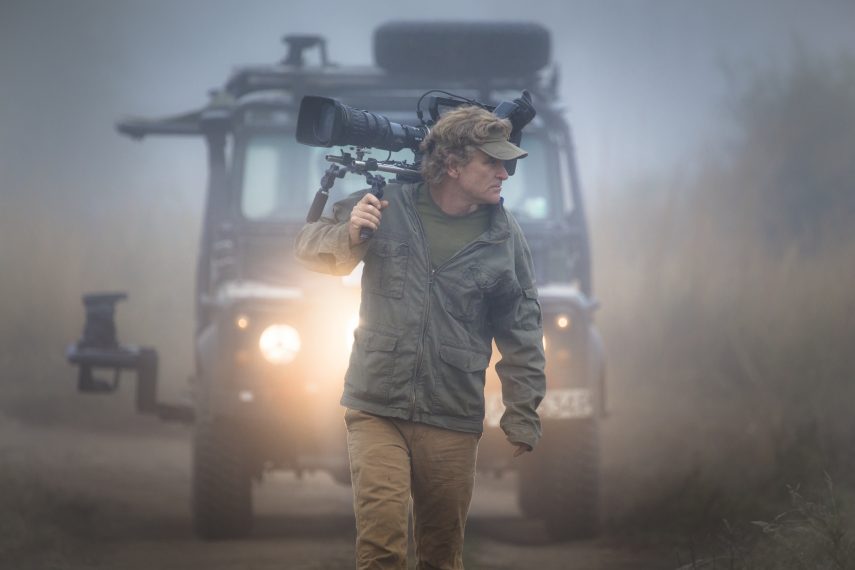
Wildlife Cameraman and Host, Bob Poole preps for a morning shoot with his ëBobmobileí. (National Geographic/Gina Poole)
Wild Weather
On Friday, when we visited base camp, it was the first day of summer — and it had snowed several inches that morning. But for Sunday’s premiere, the sky was clear and the temperature was a positively balmy 52 degrees. That good weather might not hold for the subsequent nights, however, and there are contingency plans galore if something bad should happen.
“The rivers are raging, the snow is melting — and falling — but it’s a very, very dramatic time, weather-wise, and we’ve incorporated that into the shows too,” Smith said as flakes dusted the ground outside of the canvas tent that served as a makeshift press room. “We’ve got some packages about wild weather; we’ve got a package showing how lightning forms in Yellowstone because of the winds coming off the Pacific meeting the cold air from the North. So we’re embracing the weather. We’re assuming we’re going to get bad weather and we’re making it part of our story because it’s such a dramatic time to be here.”
Elliott and Packam broadcast from just outside of the Western entrance to the park, about an hour and a half away from one of Yellowstone’s most famous attractions, Old Faithful geyser. The geothermal feature didn’t quite cooperate with the Sunday night broadcast schedule, forcing production to air the eruption from 90 minutes prior, but hopefully the next three nights will work better.
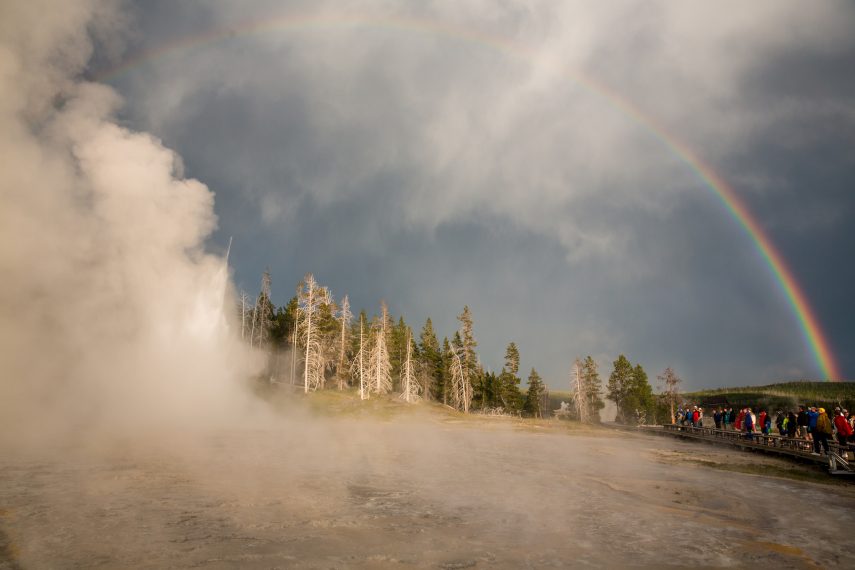
Grand geyser is the tallest predictable fountain type geyser in the world. Reaching 150 to 200ft about 3 times each day. It has an interval of 8 hours and duration of 8-12 minutes. (MICHAEL NICHOLS/National Geographic Creative)
Unpredictability
While Smith, Berman, and executive producer Martha Holmes began planning Season 2 days after wrapping Season 1, there’s still an element of unpredictability in preparing for a live broadcast like this.
“We did a table read for the first script yesterday, and it’s not really a script,” Elliott told us on Friday morning. “It’s a lot of, ‘OK, so then we hope we have this, we have that, then you and Chris will just sort of do your thing.’ It was a real if/then, you know? So we don’t really know, which is sort of the thrill.”
On that day, Smith still didn’t have a full picture of what would eventually air — save for the pre-planned segment featuring Wolfe helping rehome a prairie dog at the American Prairie Reserve.
“To be honest, at this stage Friday, we don’t know what’s in the show,” Smith confessed.
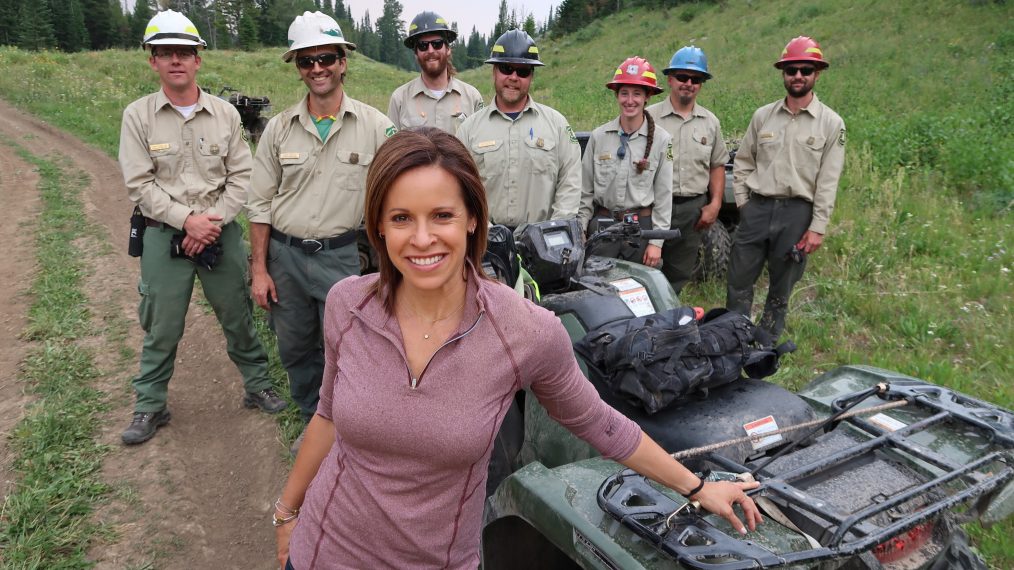
Jenna Wolfe with Forest Service team. (National Geographic)
Lessons Learned
After the first hour of the first season, it became much clearer what of Yellowstone’s ecosystem made for quality television, particularly when it came to the live factor.
“We came into last year saying let’s be live everywhere, even if that live wasn’t terribly compelling. [That was the] first episode,” Berman said. “We adjusted as the week progressed to we’re live, and let’s show what has been happening around the park, showing things that were recorded an hour earlier or earlier this morning and overnight to give people a little bit broader [idea of] what’s happening the past 24 hours, still presented live and Chris and Josh are talking over it live.”
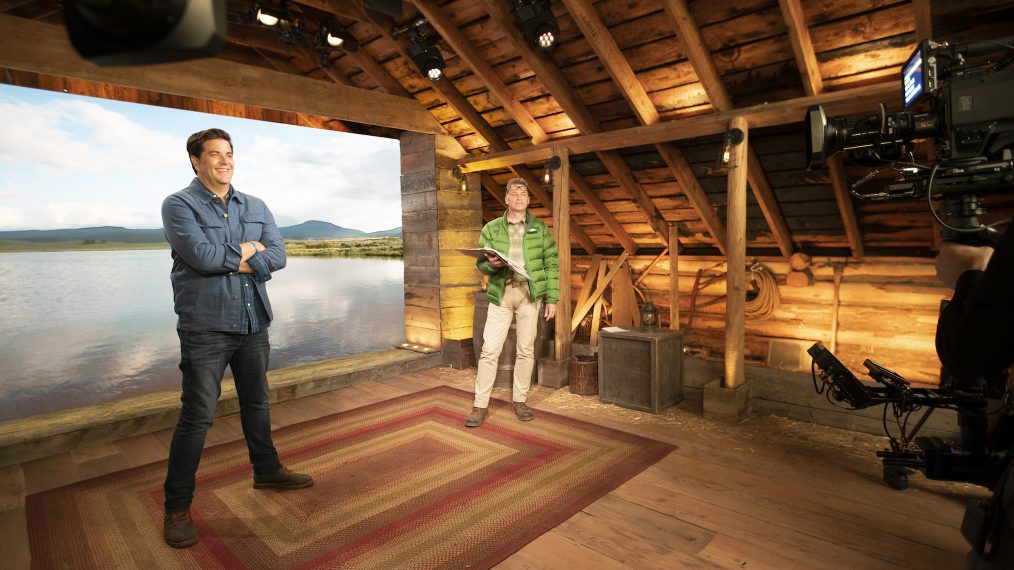
Hosts Josh Elliott and Chris Packham prep inside the barn studio in rehearsal for Yellowstone LIVE. (National Geographic/Lucy Bilson)
Facts on Facts
Elliott isn’t the only one with plenty of live TV experience, as Yellowstone Live‘s returning nature expert Packham has hosted wildlife shows including Nat Geo’s Earth Live!, The Really Wild Show, and BBC’s Springwatch and Autumnwatch.
“I don’t get easily thrown by those things,” Packham said. “I am an absolute stickler for proper information and getting the facts right.”
And he also has a comfortable working relationship with Elliott.
“He will ask me things, I hope to know the answer,” he said. “Equally, one of the most exciting things about my job is that I will never know all of the answers. I have a lifetime learning experience. I’m actually more interested in what I don’t know the more I do, because that curiosity is what stimulates me to get up in the morning and go and find out more about the natural world.”
Yellowstone Live, Monday-Wednesday, June 24-26, 9/8c, National Geographic Channel

